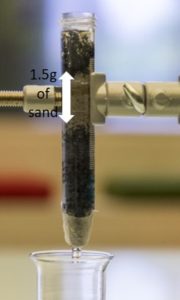Development of water purification methods using nanomaterials
 Providing an access to clean water will one of the most important challenge in the future. Due to the increase of pollution sources and the contamination of water sources by micro-organisms, by organics like dye, fertilizers and pesticides, heavy metal ion contamination… It will become more and more difficult for people to have access to clean water… Many processes already involve nanoparticles for water purification, for example carbon based nanomaterials and nanocomposites combining inorganic and organic moieties, layered double hydroxide nanomaterials, however, their performance at industrial scale limits their application due to the high cost of maintenance, energy consumption and sludge generation.
Providing an access to clean water will one of the most important challenge in the future. Due to the increase of pollution sources and the contamination of water sources by micro-organisms, by organics like dye, fertilizers and pesticides, heavy metal ion contamination… It will become more and more difficult for people to have access to clean water… Many processes already involve nanoparticles for water purification, for example carbon based nanomaterials and nanocomposites combining inorganic and organic moieties, layered double hydroxide nanomaterials, however, their performance at industrial scale limits their application due to the high cost of maintenance, energy consumption and sludge generation.
In this project we are studying the possible of using metallic nanomaterials for water purification and more particularly heavy metal extraction from water that appear the most difficult threat to combat. Most of the present solutions are very expensive and will not be available for everyone. The goal of these investigations is to develop a cost effective method for the extraction of heavy metal ions present in water and make the water immediately drinkable after treatment. The utilization of superparamagnetic nanoparticles appears to be one of the possible promising solutions and has already been tested successfully at the laboratory scale. The combination of these nanomaterials with conventional support like sand has been successfully performed. The produced sand nanocomposite is able to efficiently extract metallic ions from highly contaminated water through a single passage in the developed filter. Metallic pollutants grow directly on the surface of the sand, which offers the possibility to recycle the exhausted nanocomposite and develop a circular economy. The scientific report that describes these result will be soon available.
List of relevant publications:
- “Revealing the Dependency of Dye Adsorption and Photocatalytic Activity of ZnO Nanoparticles on Their Morphology and Defect States“
- “Nanocobalt based (Co@Co(OH)2) sand nanocomposite applied to manganese extraction from contaminated water“
- “A colorimetric method of As3+ ion detection and quantification using hand-held Lovibond photometer“
- “Surveying the Synthesis, Optical Properties and Photocatalytic Activity of Cu3N Nanomaterials“
- “Nanoadsorbants for the Removal of Heavy Metals from Contaminated Water: Current Scenario and Future Directions“
- “Electrochemical Characterisation of Co@Co(OH)2 Core‐shell Nanoparticles and their Aggregation in Solution “
- “Towards the extraction of radioactive Cesium-137 from water via graphene/CNT and nanostructured Prussian blue hybrid nanocomposites: A Review“
- “Editorial for the Special Issue on ‘Application and Behavior of Nanomaterials in Water Treatment’“ (Special Issue)
[Business]
[Video]
Research project partially funded by EMÜ Bridge Funding (P200030VLVB) and the Estonian Centre of Excellence 2015 EQUiTANT (TK134).